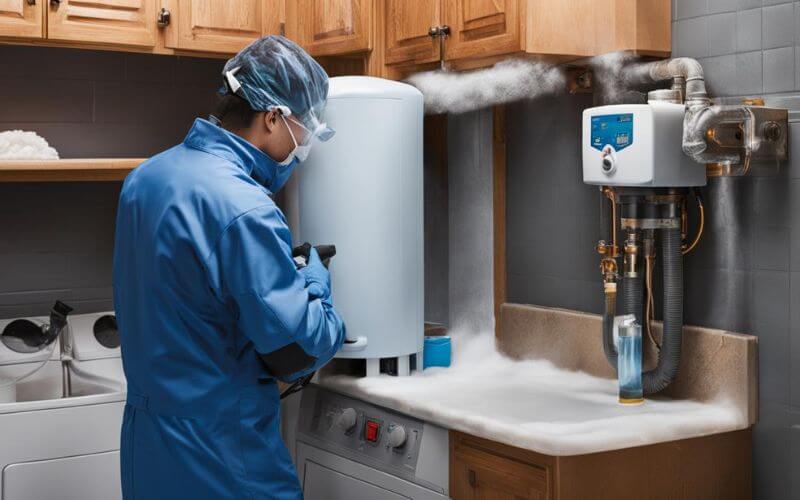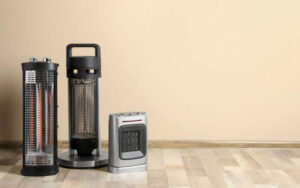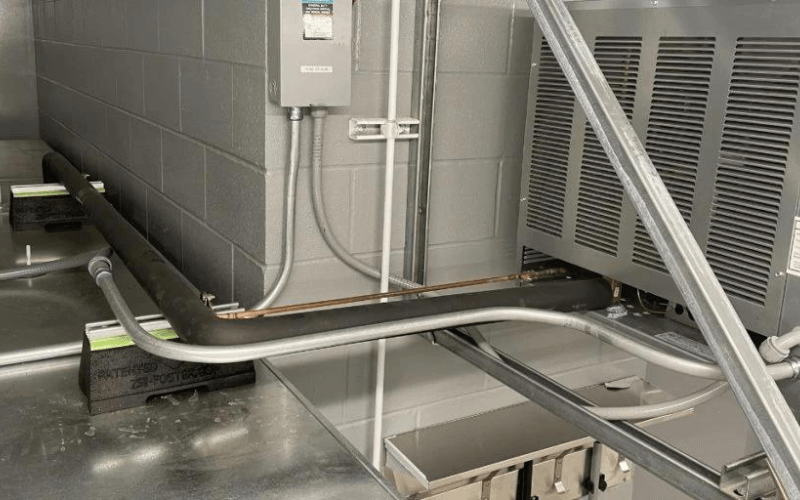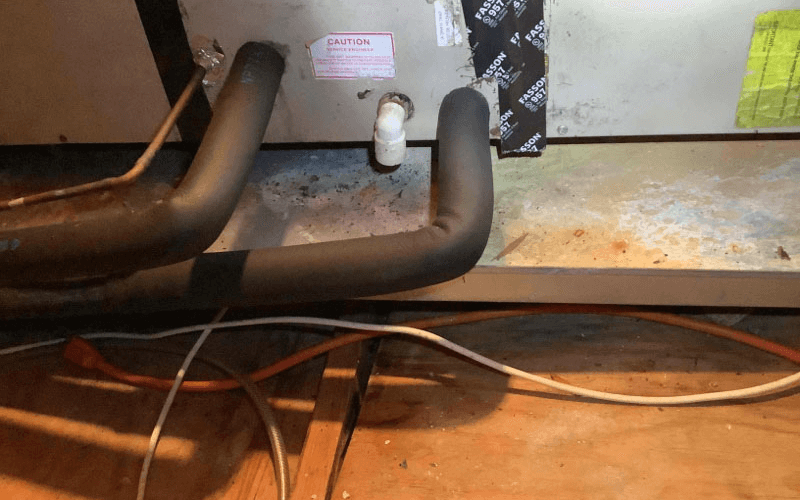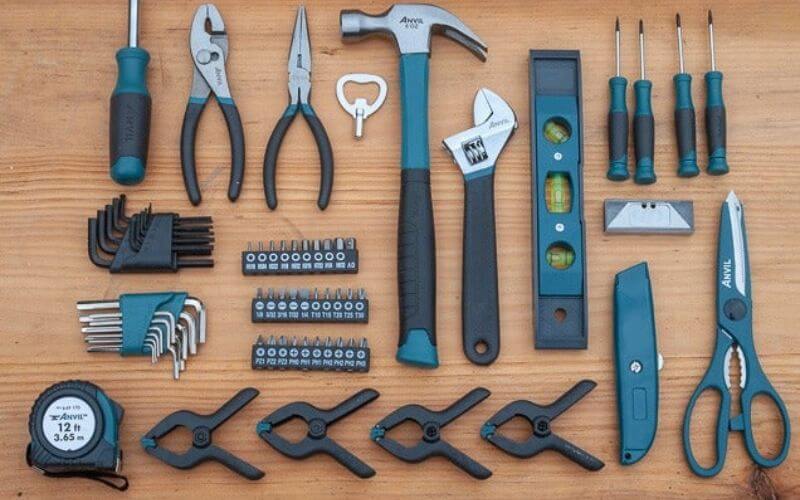A tankless heater continuously gives hot water throughout the colder months. Inductions in mild to cold climates, on the other hand, require extra caution. Water heaters can be left unprotected if the gas and electricity are turned on, even when the temperature outside is relatively low. If there is a power outage, your tankless water heater may freeze.
Table of Contents
ToggleWhen the weather turns cold, your hot water heater becomes more prone to freezing and other weather-related issues. If you live in a cold climate or need to close a summer resort, you must winterize your water heating system. Certain precautions must be taken when using a tankless water heater.
This article describes how to unfreeze a tankless water heater during the winter. However, manufacturers such as Rinnai and Raheem may have different suggestions. If you have questions about your water heater, consult the owner’s manual.
How to Thaw a Tankless Water Heater?
Remove The Protective Cover.
The cover must be removed to access the pipes inside the tankless water heater. A rubber gasket may come loose, and a few screws must almost certainly be removed. Make sure that all of the screws and the gasket are kept together. Tankless water heaters necessitate an examination of the internal components and associated plumbing.
Inspect The Pipes Both Inside And Outside The Tankless Water Heater.
Before attempting to thaw frozen pipes, it is critical to determine their location. The frozen pipes could be inside or outside of the tankless water heater. By touching the pipe, homeowners may determine which section is frozen.
In addition, inspect the pipes for any leaks or breaks. If a pipe is damaged, leaks can occur after the tankless water heater defrosts.
ALso, Read: Can a Tankless Water Heater Freeze?
Turn On The Hot Water Faucet In The Sink And Allow It To Trickle Slowly.
Only open the faucet halfway if you want a steady stream of hot water. This is essential because water may flow freely once the tankless water heater thaws. If this step is skipped, the risk of a pipe burst due to system pressure increases. Hot water from the faucet indicates that the tankless water heater has defrosted.
Use a Hair Dryer.
Use a hair dryer to thaw the pipes out of their ice prison safely. A hairdryer’s heat is sufficient to defrost an iced-over tankless water heater safely. Using something more forceful, such as a heat gun, is not advised because it may damage the tankless water heater.
Keep The Hair Dryer Moving Over The Frozen Pipes To Thaw Them.
Dry your hair in a different location every time! Keep the circling motion going. A hairdryer usually takes 15 to 45 minutes to thaw out a tankless water heater. Continue to use the hair dryer until the water in the sink becomes hot. Thaw the pipes with a hair dryer until water flows freely from the hot faucet.
The heating cycle of the tankless water heater also begins at this time. You must keep using the hair dryer to defrost the pipes until the entire flow of hot water is restored.
Use Heat Tape and Insulation.
Most modern tankless water heaters have a freeze protection feature, but it isn’t always sufficient. Replacing the heat tape and insulation inside the tankless unit and the surrounding pipe is critical to avoid further freezing. Installing a space heater in an unheated room can keep the tankless water heater from freezing.
Also, Read: How to Vent A Tankless Water Heater Properly
How Do You Handle a Frozen Tankless Water Heater?
If a tankless water heater freezes, it will stop working (and no more hot water). If the tankless water heater pipes freeze solid, the Heat Exchanger and other internal components may fail. If your tankless water heater has frozen, thaw it immediately to avoid further damage.
Homeowners should use heat tape to protect themselves during freezing temperatures. Installed over the heat tape as an extra layer of protection for the pipes.
Should Frozen Pipes Be Allowed To Defrost Naturally?
The answer is a resounding no in the case of thawing frozen pipes. When pipes are ignored, pressure builds up, and they can explode.
Water damage repairs will cost you thousands of dollars if you do nothing. To gradually warm up the pipes and solve the problem, heating pads, hair dryers, or heating wires can be used.
Another effective method is to wrap a warm towel around the circumference of the lines. Keep a blowtorch or other open flame appliance away from your frozen pipes.
Also, Read: How To Protect An Outdoor Tankless Water Heater From Freezing?
Conclusion.
Our comprehensive, step-by-step guide to thawing a frozen water heater is available to assist you. Aside from the fixes, we recommend that you perform routine maintenance. You should also know the numerous preventative measures available before the cold weather arrives.
Finally, if your water heater is still freezing, it’s time to call in the professionals from your local HVAC company or plumbing service. By talking with such professionals before each winter season, you can prevent the trouble of dealing with unforeseen water heater difficulties.
FAQ.
What are the signs of a tankless water heater that has frozen?
There are various signs that your tankless water heater is malfunctioning or that your pipes have frozen, including:
- You’re attempting to use hot water while using cold.
- Pipes are generating unusual noises.
- The pipes are not supplying any water.
What happens if a tankless water heater freezes?
You must act promptly since freezing can cause damage and impair your running water and drainage. Do not attempt to use the device. If your tankless water heater freezes, take the following actions to defrost it: Close the gas and water shutoff valves on the water heater.
How quickly can frozen water pipes be defrosted?
You can attempt a few things on your own to unfreeze a pipe. One approach is to use a hair dryer or heat gun to warm the pipe from the outside. You might also try running hot water through the pipe. If none of these solutions work, you may need a plumber.

